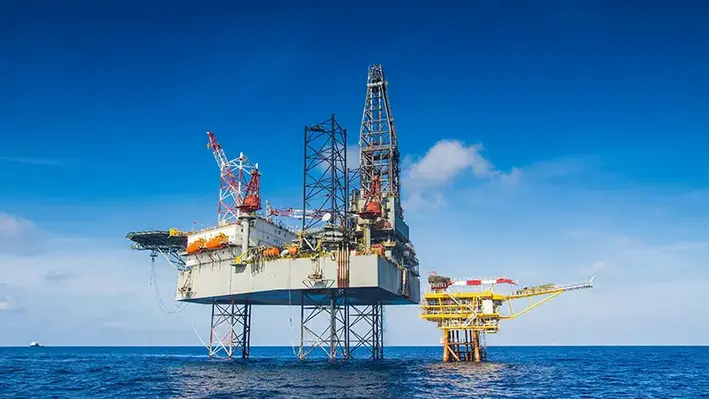
 BW Energy has announced that the short-term lease for the Super Gorilla class jack-up rig BW MAROMBA B, to be deployed in Brazil's Maromba field, has been successfully converted into a long-term project lease agreement with Minsheng Financial Leasing Co. Ltd. (MSFL)
BW Energy has announced that the short-term lease for the Super Gorilla class jack-up rig BW MAROMBA B, to be deployed in Brazil's Maromba field, has been successfully converted into a long-term project lease agreement with Minsheng Financial Leasing Co. Ltd. (MSFL)
The new lease agreement covers the rig purchase and all costs required to get the MAROMBA B wellhead platform ready for drilling and production. This provides an efficient lease financing structure for the project's development phase, followed by a 10-year lease term. The lease will commence upon first oil for the Maromba development, with no payments due before this point. The lease carries a fixed daily rate of US$ 120,500, providing cost predictability throughout the lease period.
"We are pleased to establish an attractive lease financing for the full scope of the Maromba wellhead platform investment, building on our strong relationship with MSFL," said Thomas Young, the CFO of BW Energy. "This agreement further highlights our ability to consistently leverage repurposed production infrastructure to enable cost-efficient greenfield developments."
The rig is expected to arrive in Dubai from Singapore before the end of the year. At the yard in Dubai, it will be refurbished and converted into a fully integrated drilling and production platform. The unit's recent drilling service in Australia supports an efficient upgrade and refurbishment programme. When completed, it will mobilise to Brazil and commence drilling and completion work according to the phased development plan for the Maromba field.
The Maromba field in the southern Campos Basin offshore Brazil, around 100 km southeast of the city of Cabo Frio, is estimated to contain around 100mn bbl of oil and has an estimated oil production capacity of 30,000 to 40,000 barrels per day. It is 95% owned by BW Energy, the operator, and is being developed in phases, with first oil scheduled for 2027. 5 Star Oil & Gas Brasil Ltda holds a 5% back-in right in the Maromba licence.
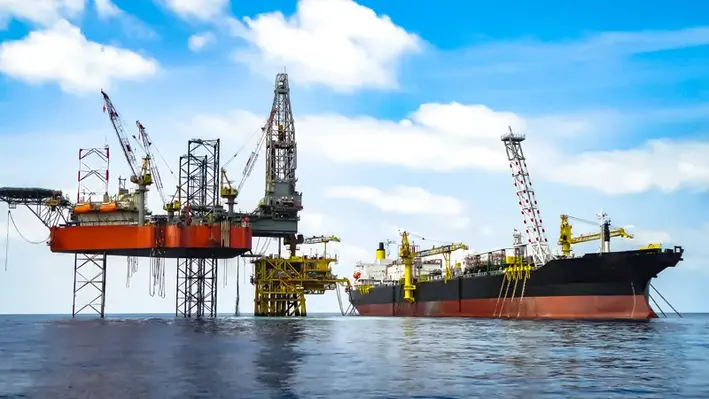
 Petrobras and Shell Brasil Petróleo Ltda. (Shell Brasil), a subsidiary of Shell plc, have together secured additional equity in Brazil’s pre-salt oil projects following an auction led by Pré-Sal Petróleo.
Petrobras and Shell Brasil Petróleo Ltda. (Shell Brasil), a subsidiary of Shell plc, have together secured additional equity in Brazil’s pre-salt oil projects following an auction led by Pré-Sal Petróleo.
Petrobras increased its stake in the shared Mero field from 38.6% to 41.4%, and increased its stake in the shared Atapu field from 65.687% to 66.38%. Shell Brasil increased its participating interest from 16.663% to 16.917% in Atapu and from 19.3% to 20% in Mero.
Both projects are located in the offshore Santos Basin. In the Mero field, the four FPSOs and an Early Production System (EPS) have a combined gross installed production capacity of 770,000 barrels of oil per day. the P-70 Floating, Production, Storage and Offloading unit (FPSO), which has the capacity to produce 150,000 barrels of oil per day. To support future growth, a second FPSO (P-84), with a production capacity of 225,000 barrels of oil per day, is currently under construction.
This auction was supported by Law No. 15,164, of July 14, 2025, which amended Law No. 12,351, of December 22, 2010, authorising the Union to sell its rights and obligations arising from production individualisation agreements in non-granted or non-shared areas in the pre-salt area.
Petrobras' participation in the PPSA Uncontracted Areas Auction is aligned with the company's long-term strategy, reaffirmed in the 2026-30 Business Plan, which foresees the replenishment of its oil and gas reserves with economic and environmental resilience.
In Shell’s case, the investment strengthens Shell’s position in areas where it has existing assets and supports the company’s aim to sustain material liquids production of 1.4 million barrels per day through 2030.
“Today’s winning bid reinforces our disciplined approach to grow Shell’s high margin portfolio in Brazil,” said Peter Costello, Shell’s Upstream President. “Our assets in Brazil are among the most competitive in our global portfolio, combining strong performance with a low carbon footprint.”

 Acteon’s Moorings and Anchors business line, Intermoor, has been awarded a broad-ranging quality assurance contract by Petrobras in Brazil.
Acteon’s Moorings and Anchors business line, Intermoor, has been awarded a broad-ranging quality assurance contract by Petrobras in Brazil.
The three-year contract is the result of a Memorandum of Understanding (MoU) that was signed at the Offshore Technology Conference (OTC) in Houston in May.
As work is set to commence this month, Intermoor will be providing traceability services across Petrobras’ extensive inventory of critical mooring components, besides delivering comprehensive quality assurance as well. The mooring component comprises an intricate network of anchors, chains, wire and associated accessories that supports Petrobras offshore operations portfolio across Brazil.
Other services will include Radio Frequency Identification (RFID) tag installation, dimensional and visual inspection of mooring equipment, triage of returned components and deployment of advanced 3D scanning and photogrammetry technologies. While these will cover Petrobras’ bases in Rio de Janeiro and Macaé, it also has scopes for expansion to additional sites nationwide.
The contract further solidifies Acteon’s two-decade presence in Brazil, where the company operates five offices providing engineering, survey and mooring support services, including quayside facilities at Porto do Açu.
"This award is a strong endorsement of our long-standing partnership with Petrobras and our commitment to the safe, efficient management of critical offshore infrastructure. By combining proven mooring expertise with innovative digital monitoring and inspection technologies, we provide insight and rapid responsiveness our customers need to protect assets, optimise performance and make confident decisions across the entire project lifecycle," said David McGuire, EVP, InterMoor.
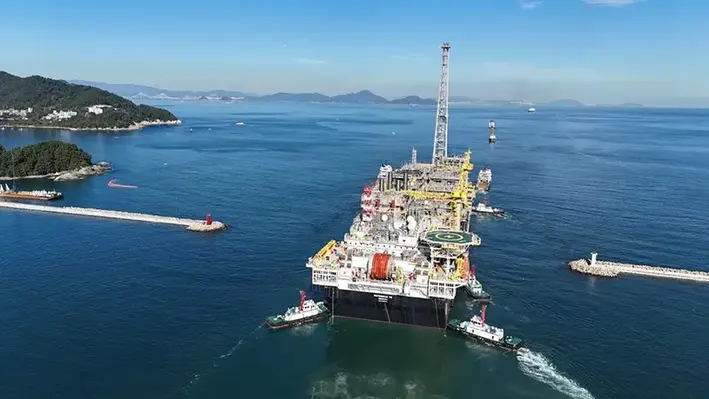
 Petrobras’s P-79 floating production, storage and offloading (FPSO) vessel has left the Hanwha Ocean shipyard in South Korea and is due to arrive at the Búzios field in the pre-salt layer of the Santos Basin in February 2026.
Petrobras’s P-79 floating production, storage and offloading (FPSO) vessel has left the Hanwha Ocean shipyard in South Korea and is due to arrive at the Búzios field in the pre-salt layer of the Santos Basin in February 2026.
The platform will be towed to its location with the crew on board, which will help speed up the start of production, according to the company.
“The arrival of the crewed platform, as was done with the P-78, has proven to be a successful strategy for reducing the time to start production,” said Renata Baruzzi, director of Engineering, Technology and Innovation at Petrobras.
“This is the eighth unit of the 12 planned for the field. Our expectation is that we will be able to anticipate the first oil by two months compared to what is planned in our Strategic Plan. This is yet another result of the dedication of the entire Petrobras team, combined with negotiations with suppliers, detailed planning and, above all, discipline to carry out what was planned,” he commented.
Production from the platform is scheduled to begin in August 2026 and will increase the current installed production capacity of the Búzios field by approximately 15.6% , to around 1.3mn bpd, taking into account the start of production of the P-78 in December of this year.
The Búzios field is located in ultra-deep waters of the Santos Basin (depth up to 2,100 meters), 180 km off the coast of the state of Rio de Janeiro, where six FPSOs are already producing: P-74, P-75, P-76, P-77, Almirante Barroso, and Almirante Tamandaré. In October, it became Petrobras' largest producing field, exceeding 1 million bpd. The P-79 project includes 14 wells, eight of which are producers and six are WAG injectors (alternating oil and gas injection technology).
The hull construction took place at Hanwha Ocean in Geoje-Si, South Korea, where the integration and commissioning of the topside modules, built in China, Brazil, South Korea, and Indonesia, also took place.

 Petrobras will be acquiring a rigid riser-based subsea solution by Allseas for the ultra-deepwater Ataptu-2 pre-salt field development, 230 kms offshore Rio de Janeiro, Brazil.
Petrobras will be acquiring a rigid riser-based subsea solution by Allseas for the ultra-deepwater Ataptu-2 pre-salt field development, 230 kms offshore Rio de Janeiro, Brazil.
Won by tender, the contract covers design, procurement, construction and installation of 143 kms of rigid risers and flowlines in water depths exceeding 2000 metres. The subsea network will connect 18 wells to a new FPSO via steel catenary risers in a ‘lazy wave’ configuration. The scope also includes critical components such as flex-joints, pipeline end terminations and jumpers to complete the connections. Offshore work is scheduled to begin in Q1 2029 and will be executed by Allseas’ pipelay vessel Audacia.
Scopewise, Atapu-2 surpasses Búzios-10, comprising additional wells and longer pipeline systems. The combined value of Búzios-10 and Atapu-2 contracts rank among the largest and most technically complex in Allseas’ 40-year history.
With offshore work scheduled to begin in Q1 2029, Allseas' project management and engineering presence has been expanded in Rio de Janeiro to support both projects aided by its strategic hub for operations in Brazil. Preparations are underway to award subcontracts for seamless linepipe manufacturing, internal cladding and flexible joints for the steel catenary risers, further strengthening the local supply chain.
André de Melo, Allseas General Manager Brazil, said, “This award demonstrates Petrobras’ confidence in Allseas’ proven capability to execute large-scale, technically complex projects safely and efficiently. We are proud to contribute to the continued development of Brazil’s offshore resources and to strengthen our engagement with local suppliers and talent.”

 The Bacalhau field in Brazil has seen start-up of production as its operator, Equinor, along with partners ExxonMobil Brasil, Petrogal Brasil (JV Galp|Sinopec) and Pré-sal Petróleo SA (PPSA), achieved exceptional engineering feat.
The Bacalhau field in Brazil has seen start-up of production as its operator, Equinor, along with partners ExxonMobil Brasil, Petrogal Brasil (JV Galp|Sinopec) and Pré-sal Petróleo SA (PPSA), achieved exceptional engineering feat.
“Around 70 million hours of work have been recorded in the project with solid safety results. I would like to sincerely thank our partners, suppliers, and employees for making this achievement a reality. With its size, water depth and lower carbon intensity, Bacalhau is a testament to our engineering capabilities and ability to operate internationally,” said Geir Tungesvik, Executive Vice President, Projects, Drilling and Procurement.
With recoverable reserves surpassing 1 billion barrels of oil equivalent (boe), Bacalhau is the largest international offshore field ever developed by Equinor.
"The safe start-up of Bacalhau marks a major milestone for Equinor. Bacalhau represents a new generation of projects that bring together scale, cost-efficiency and lower carbon intensity. With this development, we are strengthening the longevity of our oil and gas production and securing value creation for decades to come,” says Anders Opedal, President and CEO of Equinor.
Bacalhau is located in the pre-salt region of Brazil's Santos Basin in ultra-deep water exceeding 2,000 metres. The field features one of the most modern floating production storage and offloading vessels (FPSO) in the world, measuring 370 metres in length and 64 metres in width, with a production capacity of 220,000 barrels of oil per day (bpd).
About 19 wells, producers and injectors are set to be brought online in sequence as part of the Phase 1 development of the project ahead of ramp up and production sustenance work.
The Bacalhau FPSO is equipped with advanced carbon-reduction technology in the form of combined-cycle gas turbines (CCGT). With an expected CO₂ intensity of around 9 kg per boe, and advanced abatement across flaring, processing, power generation, and storage, the field sets a new benchmark for cost efficient and lower emission deepwater production.
“Brazil is a core area for us and Bacalhau will be a major contributorto Equinor’s goal of generating more than 5 billion dollars of free cashflow by 2030 from our international portfolio. Bacalhau will also deliver positive ripple effects and long-term benefits to Brazil´s economy, creating approximately 50,000 jobs over its 30-year lifetime,” said Philippe Mathieu, Executive Vice President for Exploration and Production International.
MODEC, the FPSO contractor, will operate the unit for the initial phase. Thereafter, Equinor plans to operate the Bacalhau facilities until end of the license period.

 DOF Group ASA has secured two new long-term contracts with Brazil’s state-owned energy company Petrobras.
DOF Group ASA has secured two new long-term contracts with Brazil’s state-owned energy company Petrobras.
Skandi Chieftain and Skandi Olympia have been awarded four-year charters with the operator, with both contracts offering a combined value of approximately US$200mn. Both vessels will operate with one WROV and are expected to be delivered in October 2026.
The contracts followed the same competitive tender process that resulted in the award of Skandi Achiever, Skandi Carla, Geoholm and Skandi Salvador on the RSV 2024 tender.
Last month the Group was also awarded three service contracts for work in Brazil under Petrobras for subsea inspections as part of the operator’s subsea programme.
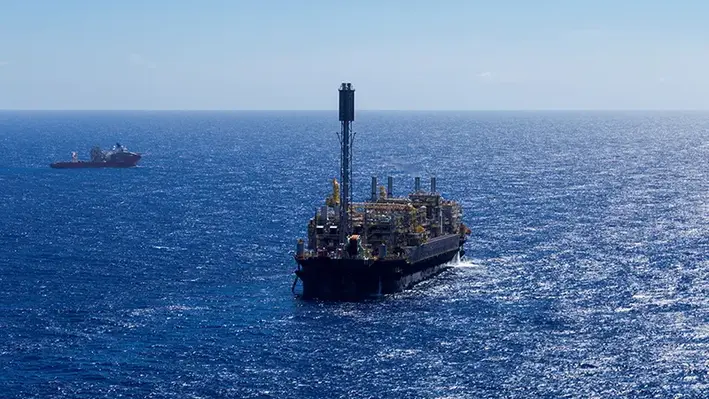
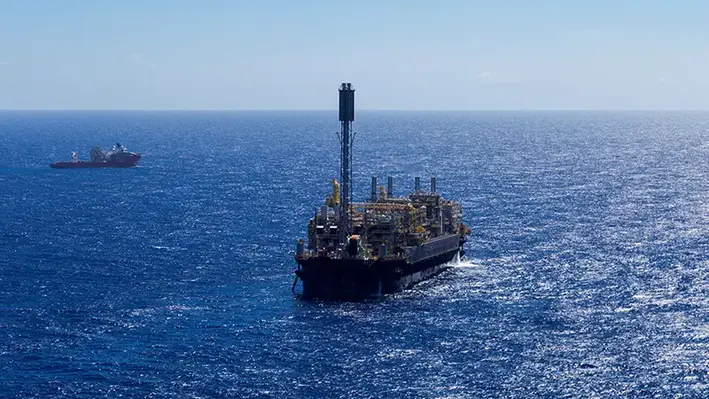 As part of consolidating its largest producing field, Petrobras has began contracting for the construction of the FPSO Buzios 12 for installation in the Santos Basin, in the state of Rio de Janeiro.
As part of consolidating its largest producing field, Petrobras has began contracting for the construction of the FPSO Buzios 12 for installation in the Santos Basin, in the state of Rio de Janeiro.
P-91, which will be the 12th platform assigned to the Buzios field, will be connected to 16 wells, including eight producers and eight alternating water and gas injectors, with a capacity to produce 180,000 barrels of oil per day and 12 million cubic meters of natural gas per day.
The development of Buzios 12 aims to expand the field's production and add economic value, in partnership with CNPC (China National Petroleum Corporation, 3.67%) and CNOOC (China National Offshore Oil Corp, 7.34%), with Petrobras as operator (88.99%).
Alongside systems to process and separate its own production, the new P-91 unit will also be capable of exporting gas produced on other platforms in the field that were not originally designed for gas export. The generated gas will be directed to the Boaventura Energy Complex in Itaborai via the Rota 3 gas pipeline until reaching the coast.
"Starting the contracting process for Búzios 12 on Petrobras' anniversary is symbolic: it demonstrates the strength of our innovative capacity and the work of generations of professionals committed to the country. This new unit expands the supply of natural gas to the Brazilian market, ensuring safe, competitive energy that's essential for a fair energy transition. The P-91 is designed with solutions to increase gas supply to the market, reduce emissions, and increase energy efficiency, reflecting Petrobras' raison d'être: generating wealth for Brazilian society responsibly and sustainably," said the company's president, Magda Chambriard.
Initiated by Petrobras, the Buzios 12 contracting process is driven by the BOT (Build-Operate-Transfer) model, in which the contractor is responsible for the design, construction, assembly, and operation of the asset for an initial period defined in the contract. Operation will subsequently be transferred to Petrobras.
Interested companies will have 180 days from the publication of the Request for Proposals (SEP) to submit their proposals. The SEP establishes a minimum local content percentage of 25%.

 MODEC has been awarded an Engineering, Procurement, Construction, and Installation (EPCI) contract to develop a Floating Production Storage and Offloading (FPSO) vessel for ExxonMobil Guyana's Hammerhead Project offshore Guyana, following Final Investment Decision (FID).
MODEC has been awarded an Engineering, Procurement, Construction, and Installation (EPCI) contract to develop a Floating Production Storage and Offloading (FPSO) vessel for ExxonMobil Guyana's Hammerhead Project offshore Guyana, following Final Investment Decision (FID).
Phase One of the contract, covering Front-End Engineering and Design (FEED), has already been completed.
“We are honoured to be entrusted with the full EPCI scope for Hammerhead. This award reflects MODEC’s integrated capabilities to design, build and operate—from concept and FEED through to safe execution and timely delivery of the project,” said Soichi Ide, head of Floating Production Solutions Business Unit of MODEC. “MODEC’s strategic relationship with ExxonMobil Guyana positions us to work with them and our stakeholders to create lasting value throughout the project lifecycle.”
The Hammerhead FPSO will have the initial annual average production of 150,000 barrels of oil per day (BOPD), along with associated gas and water. It will be moored at a water depth of approximately 1,025 metres.
The Hammerhead FPSO will be MODEC’s second for use in Guyana, following the Errea Wittu, which is currently being built for ExxonMobil Guyana’s Uaru project. As with the Uaru Project, MODEC will provide ExxonMobil with operations and maintenance services for the FPSO for 10 years from first oil.
The US$6.8 billion Hammerhead project, due to start up in 2029, is the seventh project on the Stabroek block, and will include 18 production and injection wells.
ExxonMobil is producing approximately 650,000 barrels of oil per day from the Stabroek block. With the recent successful startup of a fourth FPSO, the ONE GUYANA, the company anticipates growing production to more than 900,000 barrels of oil per day by the end of the year. Construction is underway for the fifth and sixth approved projects, Uaru and Whiptail, with Uaru anticipated to start production in 2026, and Whiptail is anticipated for startup in 2027.
ExxonMobil affiliate ExxonMobil Guyana Limited is operator and holds 45% interest in the Stabroek block. Hess Guyana Exploration Ltd. holds 30% interest, and CNOOC Petroleum Guyana Limited holds 25% interest.
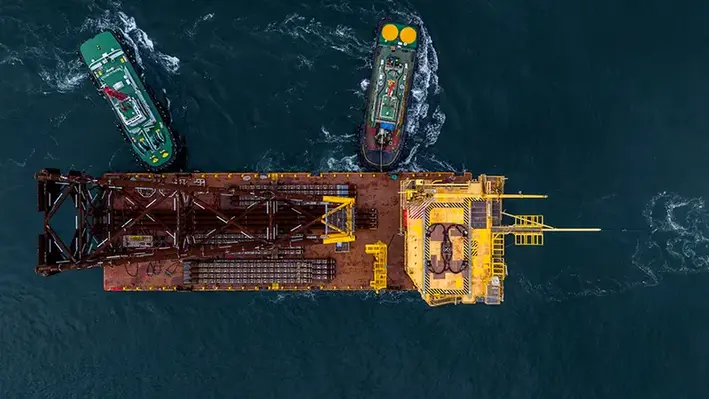
 Saipem has officially received the go-ahead from ExxonMobil Guyana Limited to commence full-scale operations for the Hammerhead oil field development project. This offshore venture, located around 1,000 metres deep in the Stabroek block off Guyana, is valued at approximately US$500mn.
Saipem has officially received the go-ahead from ExxonMobil Guyana Limited to commence full-scale operations for the Hammerhead oil field development project. This offshore venture, located around 1,000 metres deep in the Stabroek block off Guyana, is valued at approximately US$500mn.
The partnership between Saipem and ExxonMobil began earlier this year, when Saipem was granted a Limited Notice To Proceed (LNTP) on April 2, 2025. This initial step allowed Saipem to begin detailed engineering work and procure essential long-lead equipment. Now, following the necessary regulatory approvals and ExxonMobil’s final investment decision, Saipem is set to push ahead with the project, with offshore operations slated for 2028.
The scope of Saipem’s work will involve engineering, procurement, construction, and installation (EPCI) of key subsea infrastructure, including umbilical, riser, and flowline (SURF) structures. These components will be critical for the production facilities and the gas export system needed for the Hammerhead oil field. The project site is located approximately 200 km from the Guyanese coastline.
Saipem plans to deploy a range of specialised equipment for this ambitious project, including the Saipem FDS2 and the Shen Da, which is part of the company's chartered vessel fleet. The logistics will be managed through the Vreed-en-Hoop Shorebase Inc. (VEHSI), ensuring local job creation and business opportunities in Guyana.
With this major milestone, Saipem solidifies its strategic partnership with ExxonMobil in Guyana, further strengthening its presence in the region. Saipem’s commitment is also reflected in its previous contracts with ExxonMobil for other projects in the Stabroek block, including Liza Phase 1 and 2, Payara, Yellowtail, UARU, and Whiptail.
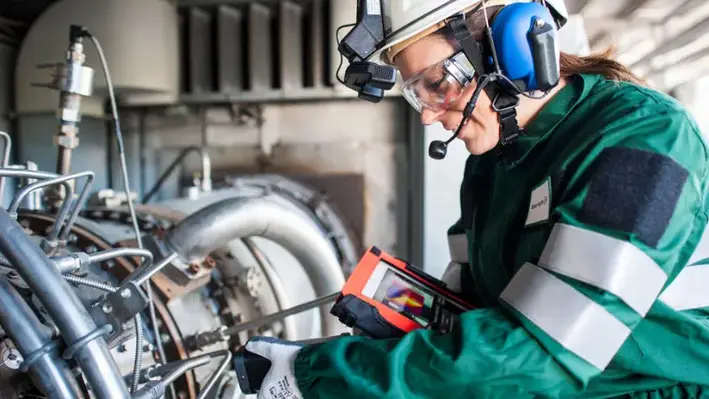
 The energy technology company has been awarded a significant deal from Petrobras to suppler up to 50 subsea tree systems and associated services to support offshore oil and gas production across multiple fields in Brazil.
The energy technology company has been awarded a significant deal from Petrobras to suppler up to 50 subsea tree systems and associated services to support offshore oil and gas production across multiple fields in Brazil.
Under the agreement, Baker Hughes will manufacture Petrobras’ pre-salt standard subsea tress, as well as subsea distribution units, in-line trees and vertical connection systems, to enable safe, reliable and efficient production on the seafloor.
In addition, topside control cabinets will provide monitoring and control of subsea equipment from floating production storage and offloading vessels.
Amerino Gatti, Executive Vice President of Oilfield Services & Equipment at Baker Hughes, said, “Baker Hughes has a history of innovation and operational excellence throughout our decades of collaboration with Petrobras. This agreement opens new opportunities to accelerate growth in Brazil’s offshore energy sector, and we look forward to helping Petrobras efficiently and responsibly develop the hydrocarbon resources that power Latin America.”
The modern subsea systems will enhance recovery in fields including Albacora, Jubarte and Barracuda-Caratinga. They will also be deployed in more recent pre-salt developments, including the Mero and Buzios fields, to optimise production in new wells.
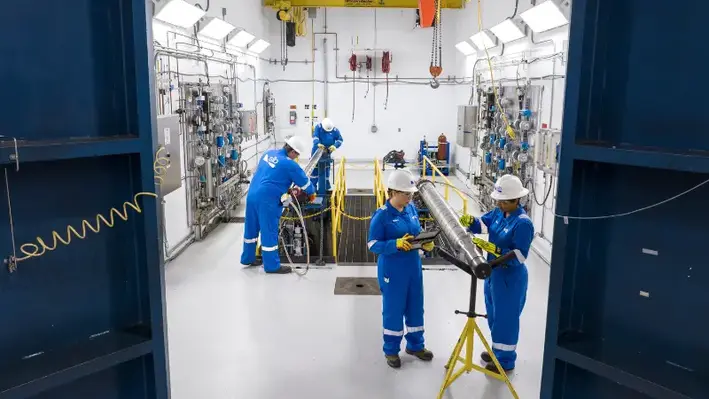
 Global technology company SLB has announced a major contract with Petrobras to provide services and technology for up to 35 ultra-deepwater wells in the Santos Basin.
Global technology company SLB has announced a major contract with Petrobras to provide services and technology for up to 35 ultra-deepwater wells in the Santos Basin.
The wells target large oil and gas reserves beneath thick salt layers located up to 2,000 metres below the surface.
As part of its project scope, SLB will deploy advanced electric completions technologies and digital solutions that deliver precise, real-time production intelligence and improved reservoir management to produce the hard-to-access resources.
Paul Sims, President of Production Systems, SLB, said, “This will help Petrobras drive greater reliability, system uptime and production performance in those fields – supporting Brazil’s energy security and economic growth ambitions.”
Work is scheduled to begin by mid-2026 and will feature advanced services and technology for SLB’s completions portfolio, including the Electris high-flow-rate interval control valves.
Page 1 of 10
Copyright © 2025 Offshore Network